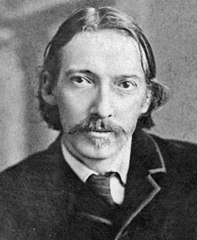57th Phoenix Scotttish Games
 (1).jpg) We are enormously excited to announce that our Phoenix Scottish Games will return in March after the Covid-enforced break of 2021. We are enormously excited to announce that our Phoenix Scottish Games will return in March after the Covid-enforced break of 2021.
An immense amount of work has been done by the Games Committee to ensure the event will go ahead from 4-6 March. And we will be at a different venue this time around, Gilbert Regional Park at the south-west corner of Higley and Queen Creek roads.
So once again a small corner of the Valley will be filled with the familiar sights and sounds that make for a good traditional Games – the stirring music of the mass pipe bands; the lasses in their Highland dancing outfits; the groaning and straining of the heavy athletes; and the music, singing, and general enjoyment from the tents surrounding the main field.
Up to 50 clan tents, manned by representatives from a variety of Scottish clans, are expected. And there will be the traditional British Car show, a genealogy tent, and a host of food and merchandise tents. A booze tent will be open both days and there will genuinely be something for everyone.
A new event, a Twilight Tattoo, will be held on the Friday evening. Those in attendance can enjoy an amphitheater concert showcasing the sights and sounds of Scotland underneath the stars. Performers will include Celtic music, a military band, Scottish dancers, traditional pageantry and of course pipes and drums.
The official opening ceremony will take place on Saturday at 12:30 pm. We look forward to a grand show and a wonderful turnout. More specific details will be announced nearer the time, but always visit the official Games web site for up-to-date information.
|
President's Letter
Merry Happy Holidays
Mine is Merry Christmas but yours may be different and do enjoy it!
With all of the hustle and bustle on top of the societal stress we have, take time to treasure your loved ones. Our problems may not go away but may you be able to throw a snowball at them soon.
.jpg) We are embarking on a rush to set up our 2022 Scottish Games for March 4th through 6th and the turnout for our first major committee meeting was excellent with many faces we haven’t been able to see in quite some time. The Games are going to be a little different this year and at a brand-new facility, The Gilbert Regional Park. The excitement is rising and the tasks are compressed and fast paced. We can use all the support that you can muster so that we can bring our games back to life. Keep an eye on our webpages for the latest news as it will be moving quick.
We are embarking on a rush to set up our 2022 Scottish Games for March 4th through 6th and the turnout for our first major committee meeting was excellent with many faces we haven’t been able to see in quite some time. The Games are going to be a little different this year and at a brand-new facility, The Gilbert Regional Park. The excitement is rising and the tasks are compressed and fast paced. We can use all the support that you can muster so that we can bring our games back to life. Keep an eye on our webpages for the latest news as it will be moving quick.
Stay safe and sterilize with your sanitizer of choice. Scotch recommended.
Slainte. DAVID
|
John Duns Scotus
By Bob Wallace
CSA members Bob and Lois Wallace recently stumbled upon the tomb of the eminent Scottish churchman John Duns Scotus, while on a tour on the River Rhine.
.jpg) We recently had the opportunity to cruise the Rhine River from Basel, Switzerland to Amsterdam, with stops in France and Germany. We recently had the opportunity to cruise the Rhine River from Basel, Switzerland to Amsterdam, with stops in France and Germany.
Among those stops was Cologne, where we visited the massive cathedral in that city, walked some of the streets and neighborhoods before ending our walk beside and in front of that immense cathedral.
We were obviously interested in that city walk during our several hours stay in Cologne, but also interested in finding the Minoritenkirche, only minutes from the cathedral, to find the tomb of John Duns Scotus (circa 1265-1308).
Not as well-known as Robert Bruce, William Wallace or Andrew Murray, Duns Scotus still had an influence on Scots and how they viewed their place in the world. While the majority of kingdoms held to the doctrine of divine right of kings, Duns Scotus, a Franciscan friar, philosopher and theologian, advanced the idea of government by consent of the governed. That view was expressed not in those words specifically in the Declaration of Arbroath in 1320, but in this manner: “We have chosen Robert Bruce as our king. So long as he rules in a manner approved by us, he will remain our king. Should he lose our approval, he will be removed and replaced.”
|
Robert Louis Stevenson
The birthday of Robert Louis Stevenson, the man considered by many as Scotland’s second greatest poet after Robert Burns, passed with little fanfare on 13 November. He was a fascinating character as this article reveals.
 The Scottish novelist, essayist, and poet Robert Louis Stevenson was one of the most popular and highly praised British writers during the last part of the nineteenth century.
The Scottish novelist, essayist, and poet Robert Louis Stevenson was one of the most popular and highly praised British writers during the last part of the nineteenth century.
Robert Louis Stevenson was born on November 13, 1850, in Edinburgh, Scotland, the son of a noted lighthouse builder and harbor engineer. Though healthy at birth, Stevenson soon became a victim of constant breathing problems that later developed into tuberculosis, a sometimes fatal disease that attacks the lungs and bones. These persistent health problems made him extremely thin and weak most of his life.
By the time Stevenson entered Edinburgh University at the age of sixteen to study engineering, he had fallen under the spell of language and had begun to write. For
several years he attended classes irregularly, developing a bohemian existence (an artistic lifestyle different than that of mainstream society), complete with long hair and velvet jackets. He also associated himself with Edinburgh's seedy and dangerous neighborhoods.
When Stevenson was twenty-one years old, he openly declared his intention of becoming a writer, against the strong opposition of his father. Agreeing to study law as a compromise, in 1875 Stevenson was admitted to the Scottish bar, an organization for lawyers. Having traveled to the European mainland several times for health and pleasure, he now swung back and forth between Scotland and a growing circle of artistic and literary friends in London, England, and Paris, France. Stevenson's first book, An Inland Voyage (1878), related his adventures during a canoe trip on Belgium and France's canals.
In France in 1876 Stevenson met an American woman named Fanny Osbourne. Separated from her husband, she was eleven years older than Stevenson and had two children. Three years later Stevenson and Osbourne were married. After accompanying his wife to America, Stevenson stayed in an abandoned mining camp, later recounted in The Silverado Squatters (1883). A year after setting out for the United States, Stevenson was back in Scotland. But the climate there proved to be a severe hardship on his health, and for the next four years he and his wife lived in Switzerland and in the south of France. Despite his health, these years proved to be productive. The stories Stevenson collected in The New Arabian Nights (1883) and The Merry Men (1887) range from detective stories to Scottish dialect tales, or tales of the region.
Treasure Island (1881, 1883), first published as a series in a children's magazine, ranks as Stevenson's first popular book, and it established his fame. A perfect romance, according to Stevenson's formula, the novel tells the story of a boy's involvement with murderous pirates. Kidnapped (1886), set in Scotland during a time of great civil unrest, has the same charm. In its sequel, David Balfour (1893), Stevenson could not avoid psychological and moral problems without marked strain. In The Strange Case of Dr. Jekyll and Mr. Hyde (1886) he dealt directly with the nature of evil in man and the hideous effects that occur when man seeks to deny it. This work pointed the way toward Stevenson's more serious later novels. During this same period he published a very popular collection of poetry, A Child's Garden of Verses (1885).
After the death of Stevenson's father in 1887, he again traveled to the United States, this time for his health. He lived for a year at Saranac Lake, New York, in the Adirondack Mountains. In 1889 Stevenson and his family set out on a cruise of the South Sea Islands. When it became clear that only there could he live in relatively good health, he settled on the island of Upolu in Samoa. He bought a plantation (Vailima), built a house, and gained influence with the natives, who called him Tusifala ("teller of tales"). By the time of his death on December 3, 1894, Stevenson had become a significant figure in island affairs. His observations on Samoan life were published in the collection In the South Seas (1896) and in A Footnote to History (1892). Of the stories written in these years, "The Beach of Falesá" in Island Nights' Entertainments (1893) remains particularly interesting as an exploration of the confrontation between European and native ways of life.
Image Credit: Wikipedia Comoons {PD-US-expired}
|
|
Planned Burns Celebration
A Caledonian Society Burns Supper has been organized and will be held at Fibber Magee’s Irish bar on Elliot Road in Chandler on Saturday 29 January.
.jpg)
Rather than attempt a large-scale event this year with Covid uncertainty still in the air, we have opted for a smaller, more low-key affair, but one which will hopefully live up to the best of Burns Supper standards.
We will have speakers reciting Burns poetry and providing the traditional Burns Supper toasts, as well as musicians and singers. And of course, there will be haggis, shepherds pie, good Scottish shortbread, and of course plenty of whisky to ‘wet our whistle’.
The venue will hold around 60 people and will be held in a room just off the main bar. The plan as it stands is to hold a cocktail hour from 5pm followed by the dunner with presentations, and then music and poetry to finish the evening. All this is currently subject to change.
Ticket prices have yet to be decided and more information will be made available on the CSA website and Facebook page.
|
A New Whisky
Barely a month seems to go by without an exciting new announcement from the booming world of Scotch whisky. The latest comes courtesy of the Glasgow Distillery Company
The Glasgow Distillery Company out of Scotland recently announced its next triple distilled expression: the Glasgow 1770 Triple Distilled.
The 1770 Triple Distilled comes after the successful release of the inaugural 1770 Single Malt Triple Distilled expression. This new triple distilled feature is slightly different than the first iteration, but has new elements.
.jpeg)
The latest 1770 Triple Distilled is crafted from malted barley and distilled three times in traditional copper pot stills at the Glasgow Distillery and combined with the pure water of Loch Katrine, the distillery noted in a prepared statement.
The Triple Distilled Release No 1 was matured exclusively in virgin oak casks, whereas the new iteration has been matured in a combination of ex-bourbon and vigin oak casks married together before bottling to produce what’s described as a smooth and vibrant spirit.
On the nose, the distillery’s official tasting notes reveal, sweet vanilla and white chocolate leading to fresh summer fruits of aromatic apple, pear and peaches. The palate is well balanced and smooth with vibrant vanilla, soft caramel and double cream opening up to succulent orchard fruits and berries followed by floral notes and a sweet almond nuttiness.
The 1770 Triple Distilled’s finish is long and lingering with notes of rich honey, anise and black pepper and hints of warming woody spice. It is bottled at 46% ABV, non-chill filtered and natural in color. It prices for £49.
The latest Glasgow 1770 Triple Distilled will also be available to try alongside four other award winning whiskies from the Glasgow distiller when you book on to one of the distillery’s virtual whisky tastings
|
|
Black Friday Event
A happy gang of CSA members recovered from the excesses of Thanksgiving Day by heading for downtown Phoenix and embarking on a pub crawl - just to clear the head of course.
Our planed first stop, Kettle Black, had decided to close for the day, but not to be deterred we adjourned to Majerle’s Sports Bar, just a block away, where we were made most welcome with good beer and good food.
From there it was on to Seamus McCaffrey’s, one of the finest Irish bars in the Valley and something of a city center institution. Again, we were welcomed with open arms, as you would expect from fellow Celtic hosts.
Finally, we ate across the road at Cornish Pasty. It was the perfect way to avoid the crazy Black Friday shopping malls and recharge the batteries after Thanksgiving. It might well become an annual event.
|
|
A Word from our Advertisers
|



.jpg)


|
|
|
|
|
[an error occurred while processing this directive]
| | |